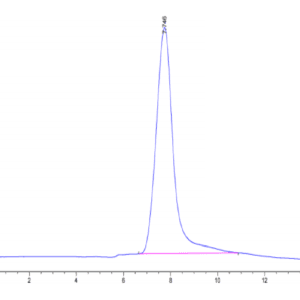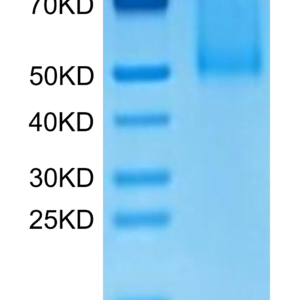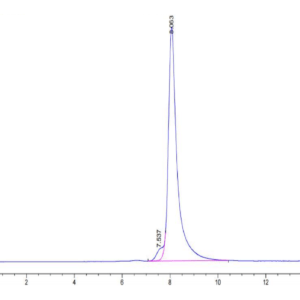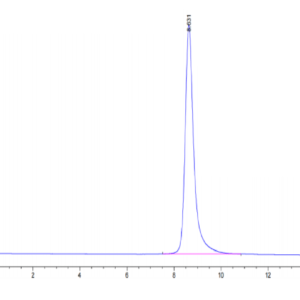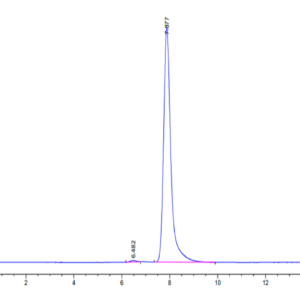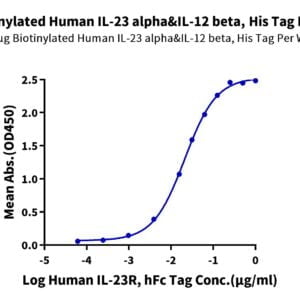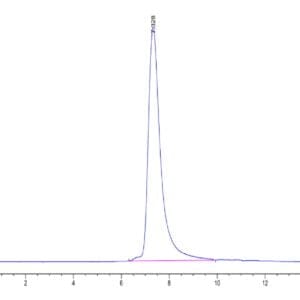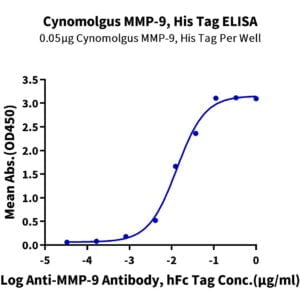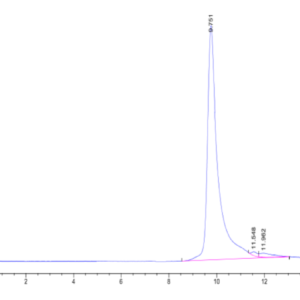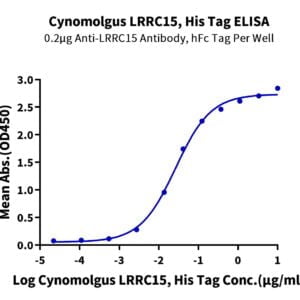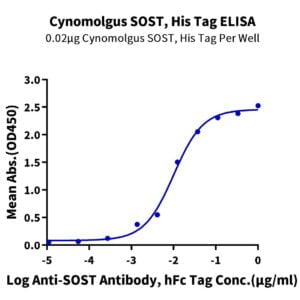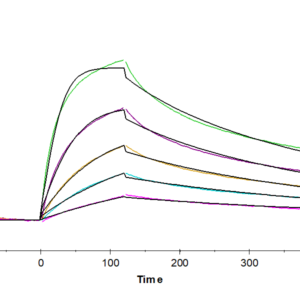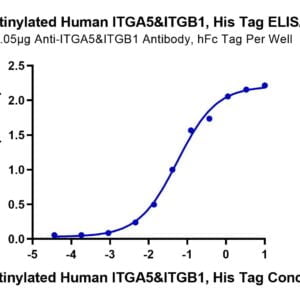| Weight | 1 lbs |
|---|---|
| Dimensions | 9 × 5 × 2 in |
| accession | P54763 |
| express system | HEK293 |
| product tag | C-His |
| purity | > 95% as determined by Tris-Bis PAGE;> 95% as determined by HPLC |
| background | EphB2, a receptor tyrosine kinase for ephrin ligands, is overexpressed in various cancers and plays an important role in tumor progression. EPHB2 promotes endothelial-mesenchymal transition (EMT) and elicits associated pathologic characteristics of glioblastoma multiforme (GBM) such as invasion and migration. EPHB2 is epigenetically overexpressed in hypoxia, a condition highly prevalent in malignancy. Furthermore, HIF-2α is required for EPHB2 stabilization by hypoxia. |
| molecular weight | The protein has a predicted MW of 59.3 kDa. Due to glycosylation, the protein migrates to 60-70 kDa based on Tris-Bis PAGE result. |
| available size | 100 µg, 500 µg |
| endotoxin | Less than 1EU per μg by the LAL method. |
Mouse EPHB2 Protein 3900
$240.00 – $800.00
Summary
- Expression: HEK293
- Pure: Yes (HPLC)
- Amino Acid Range: Val19-Leu543
Mouse EPHB2 Protein 3900
| protein |
|---|
| Size and concentration 100, 500µg and lyophilized |
| Form Lyophilized |
| Storage Instructions Valid for 12 months from date of receipt when stored at -80°C. Recommend to aliquot the protein into smaller quantities for optimal storage. Please minimize freeze-thaw cycles. |
| Storage buffer Shipped at ambient temperature. |
| Purity > 95% as determined by Tris-Bis PAGE |
| target relevance |
|---|
| EphB2, a receptor tyrosine kinase for ephrin ligands, is overexpressed in various cancers and plays an important role in tumor progression. EPHB2 promotes endothelial-mesenchymal transition (EMT) and elicits associated pathologic characteristics of glioblastoma multiforme (GBM) such as invasion and migration. EPHB2 is epigenetically overexpressed in hypoxia, a condition highly prevalent in malignancy. Furthermore, HIF-2α is required for EPHB2 stabilization by hypoxia. |
| Protein names Ephrin type-B receptor 2 (EC 2.7.10.1) (Neural kinase) (Nuk receptor tyrosine kinase) (Tyrosine-protein kinase receptor EPH-3) (Tyrosine-protein kinase receptor SEK-3) [Cleaved into: EphB2/CTF1; EphB2/CTF2] |
| Gene names Ephb2,Ephb2 Epth3 Nuk Sek3 |
| Protein family Protein kinase superfamily, Tyr protein kinase family, Ephrin receptor subfamily |
| Mass 10090Da |
| Function Receptor tyrosine kinase which binds promiscuously transmembrane ephrin-B family ligands residing on adjacent cells, leading to contact-dependent bidirectional signaling into neighboring cells. The signaling pathway downstream of the receptor is referred to as forward signaling while the signaling pathway downstream of the ephrin ligand is referred to as reverse signaling. Functions in axon guidance during development. Involved in the guidance of commissural axons, that form a major interhemispheric connection between the 2 temporal lobes of the cerebral cortex. Also involved in guidance of contralateral inner ear efferent growth cones at the midline and of retinal ganglion cell axons to the optic disk. In addition to axon guidance, also regulates dendritic spines development and maturation and stimulates the formation of excitatory synapses. Upon activation by EFNB1, abolishes the ARHGEF15-mediated negative regulation on excitatory synapse formation. Controls other aspects of development including angiogenesis, palate development and in inner ear development through regulation of endolymph production. Forward and reverse signaling through the EFNB2/EPHB2 complex regulate movement and adhesion of cells that tubularize the urethra and septate the cloaca. May function as a tumor suppressor. May be involved in the regulation of platelet activation and blood coagulation (By similarity). |
| Catalytic activity #N/A |
| Subellular location Cell membrane; Single-pass type I membrane protein. Cell projection, axon. Cell projection, dendrite. |
| Tissues Expressed in the epithelial dark cells of the inner ear. Expressed in the region of the proximal tubules of the kidney nephron. Expressed in myogenic progenitor cells (PubMed:27446912). |
| Structure Heterotetramer upon binding of the ligand (PubMed:11780069). The heterotetramer is composed of an ephrin dimer and a receptor dimer (PubMed:11780069). Interacts (via PDZ-binding motif) with GRIP1 and PICK1 (via PDZ domain) (PubMed:9883737). Interacts with ARHGEF15; mediates ARHGEF15 phosphorylation, ubiquitination and degradation by the proteasome (PubMed:21029865). Interacts with AQP1; involved in endolymph production in the inner ear (PubMed:10839360). Interacts with EFNA5 (PubMed:15107857). Interacts with SPSB1 (By similarity). Interacts with SPSB4 (PubMed:28931592). Interacts with SH2D3C (PubMed:10542222). |
| Post-translational modification Autophosphorylated; ligand binding stimulates autophosphorylation on tyrosine residues.; Ligand binding induces cleavage by matrix metalloproteinases (MMPs) such as MMP7/MMP9, producing an EphB2/N-terminal fragment (NTF) and a C-terminal long fragment (EphB2-LF). EphB2-LF is further cleaved by MMPs, producing EphB2/CTF1 which is further cleaved by the PS1/gamma-secretase producing EphB2/CTF2.; Polyubiquitinated; ligand binding stimulates ubiquitination (PubMed:17428795, PubMed:28931592). Ubiquitinated by RNF186 at Lys-891, mainly through 'Lys-27'-linked polyubiquitin chains (By similarity). |
| Target Relevance information above includes information from UniProt accession: P54763 |
| The UniProt Consortium |
Data
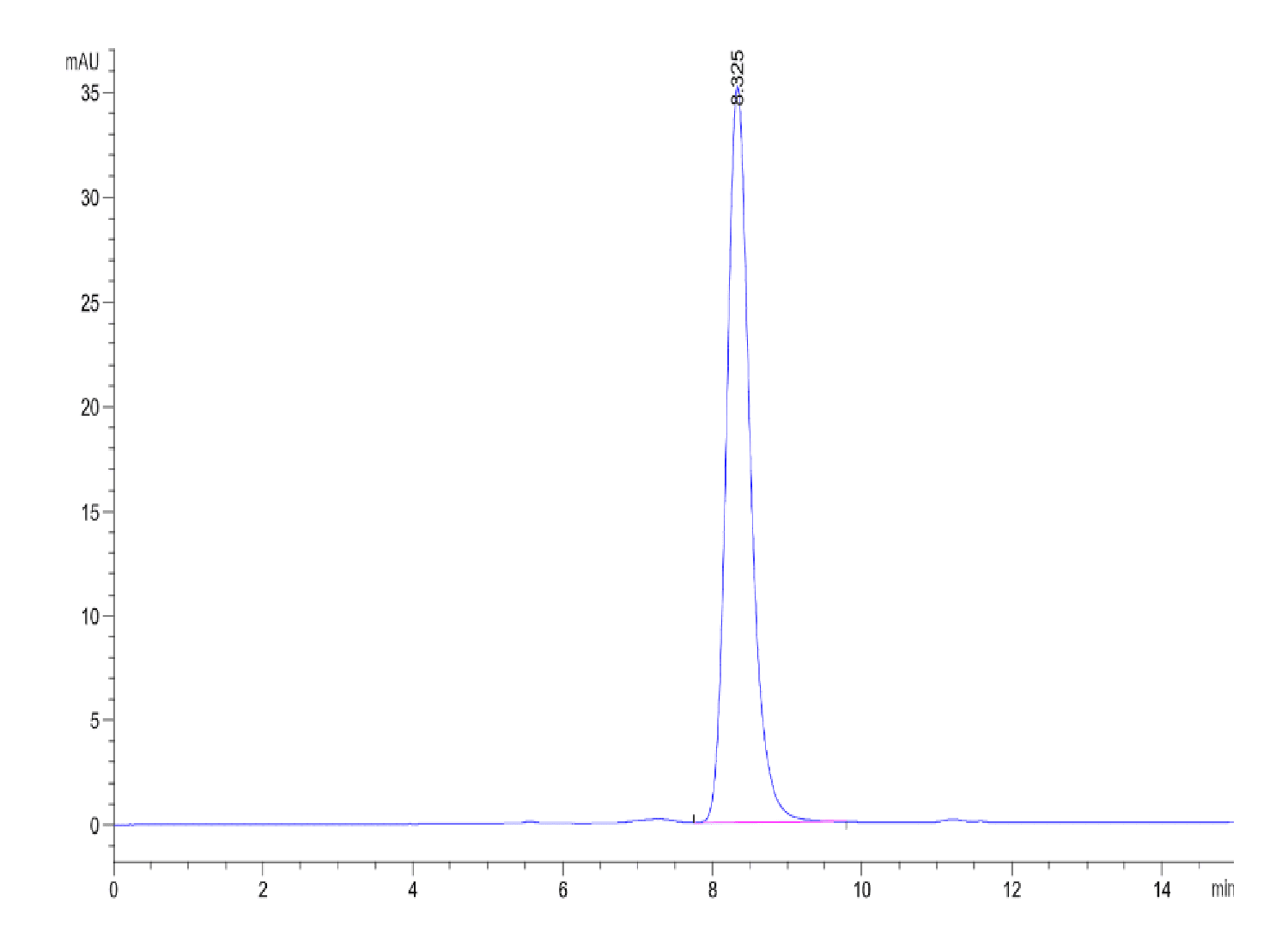 |
| The purity of Human EPHB2 is greater than 95% as determined by SEC-HPLC. |
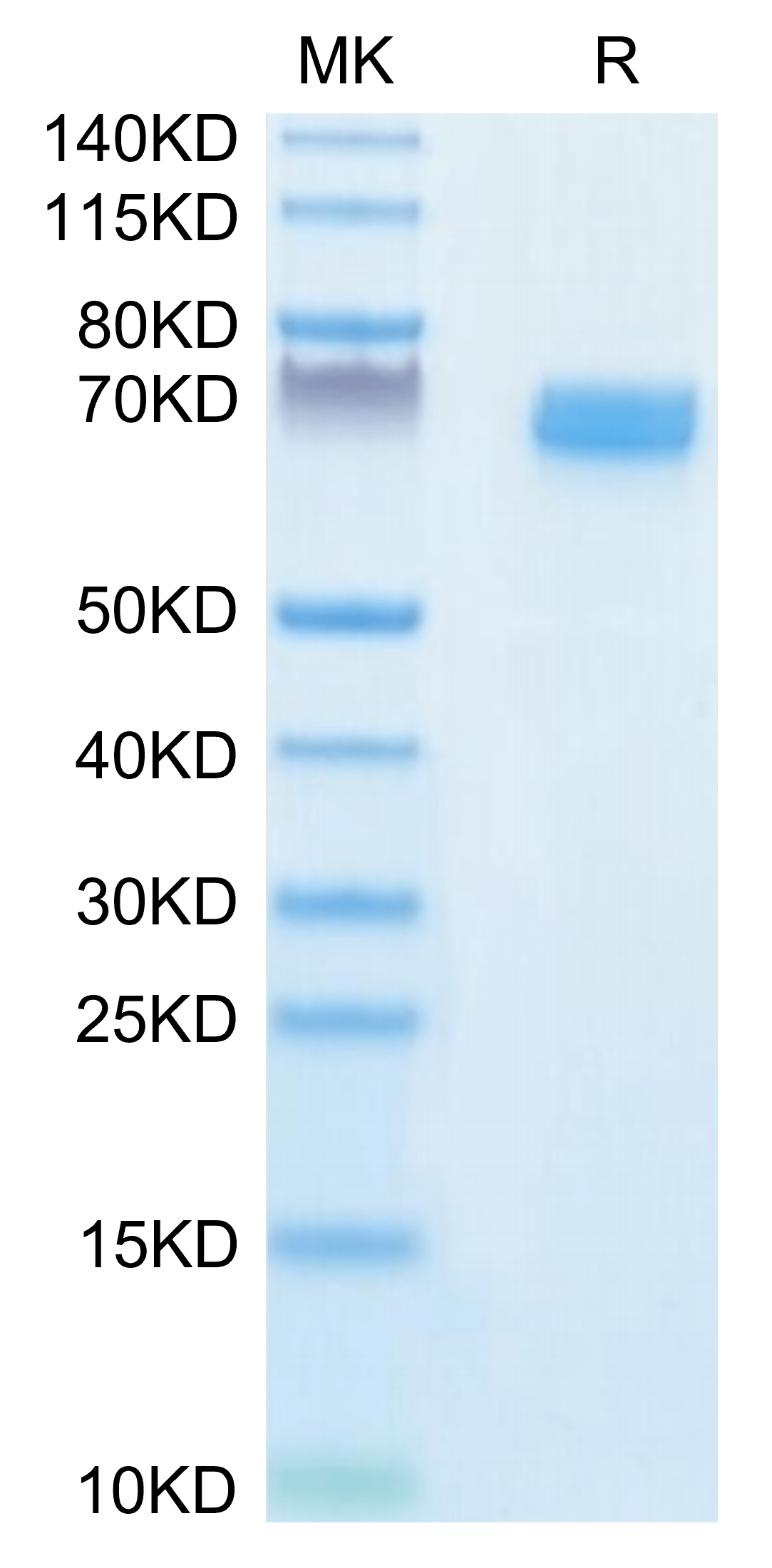 |
| Human EPHB2 on Tris-Bis PAGE under reduced condition. The purity is greater than 95%. |
Publications
Publications
| pmid | title | authors | citation |
|---|---|---|---|
| We haven't added any publications to our database yet. | |||
Protocols
| relevant to this product |
|---|
Documents
| # | ||
|---|---|---|
| Please enter your product and batch number here to retrieve product datasheet, SDS, and QC information. | ||
